Charting, statistics, reports and logs
One of the key features of PaperCut MF is the advanced charting, statistics, reporting and logging. Use this information to:
-
Determine which printers are most used
-
Spot areas where printers are inappropriate for the task.
-
View user and printer trends over time.
Charts
Charts are ideal for obtaining a quick visual overview. All users and printers have a line chart displaying activity over the last 30-days.
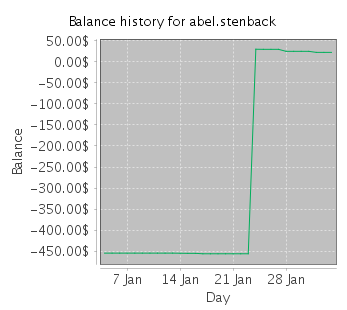
The Charts Tab under the Printers section hosts a set comparison charts allowing administrators to compare printers side by side.
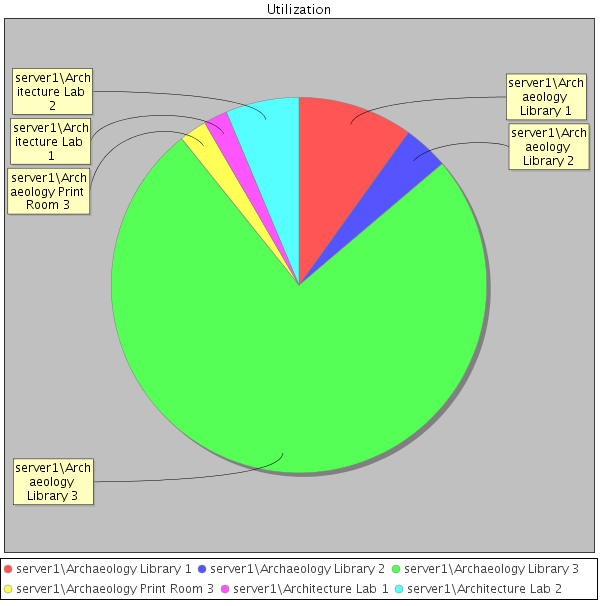
Under each individual printer the Statistics area provides information on all jobs printed on a given printer.
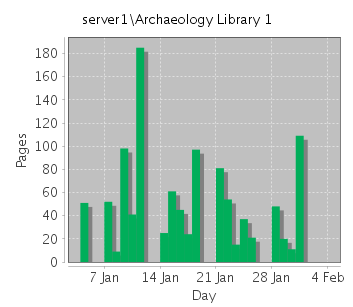
Reports
Reports provide a tabular data display, often in a printable format, of system information ranging from activity histories, summaries, transaction details, etc. Reports are typically run to print a summary of user activity, printer activity, or group or account activity. To streamline access to common reports, PaperCut MF provides a series of predefined one-click report links on the Reports page. You can generate most reports over a variety of common date ranges or user-defined date ranges.
Standard reports include:
-
User Reports
-
Print summary statistics grouped by user
-
Quick list of the most active print users
-
-
Printer Reports
-
Summary of print activity grouped by printer
-
Quick lists of the most active/busiest printers
-
-
Group Reports
-
Summary of print activity grouped by network group (Note: The group needs to be defined on the Groups tab.)
-
-
Shared Account Reports
-
Print Log Reports
-
Detailed lists of all print jobs over a given period
-
Quick list of the largest print jobs
-
Standard reports are provided in a variety of output formats including, HTML, PDF and MS Excel. PDF reports are ideal for printing. HTML versions of the reports are provided for systems without a PDF viewer.
In addition to the standard reports, administrators can run other reports on ad-hoc data by using the Export/Print option available under most of the data lists. For more information, see Reports.
Logging
The following types of activity logging is performed by PaperCut MF:
Usage logging
Usage logging records information about usage events such as printing. Information includes:
-
The date of the use
-
Who performed the use
-
Details of the type of user including, cost and other attributes
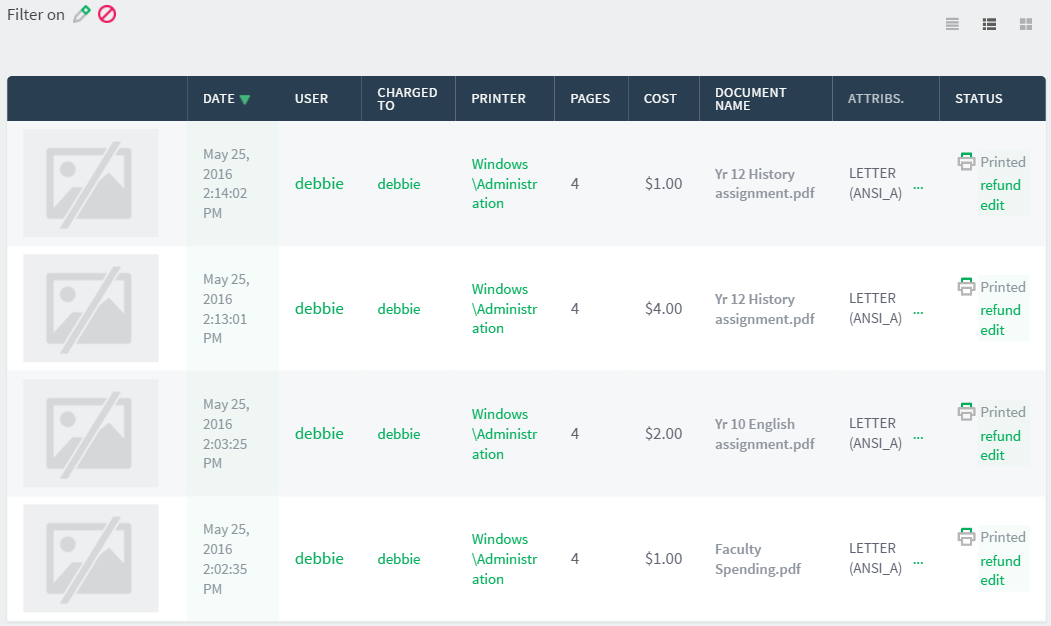
Transaction logging
All modifications or deductions to an account (user or shared) are recorded in the transaction log. Information recorded includes:
-
The date of the transaction
-
Who performed the transaction
-
Any comment or note associated with the transaction (if performed by a user)
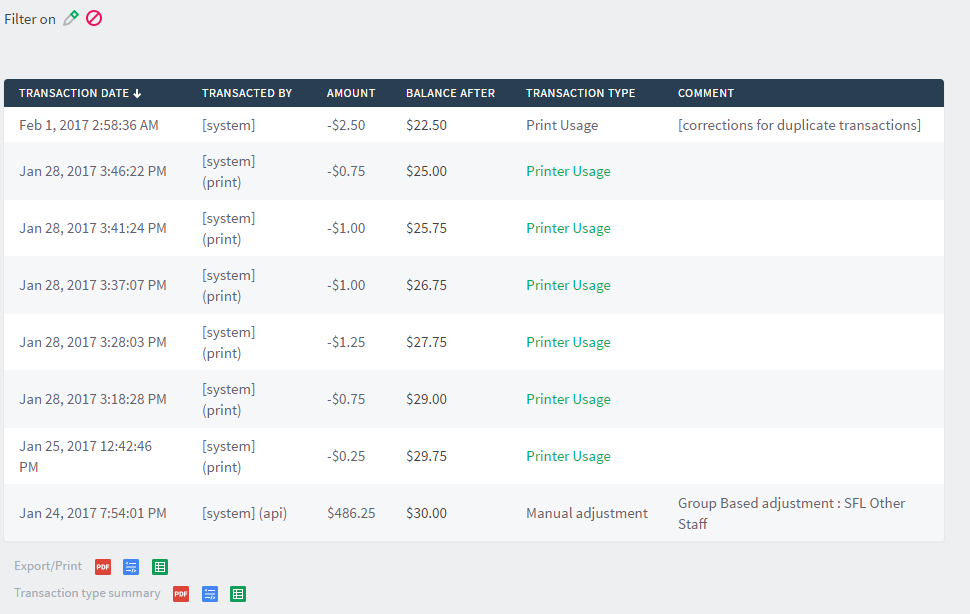
Application activity logging
The Application Log records system events messages such as:
-
User logins
-
Security errors such as incorrect password attempts
-
Backup times and scheduled tasks
-
Any system errors or warning
It is similar to the operating system's event log. It is recommended that SysAdmins view this log on a daily basis for the first week and weekly thereafter.
User audit Logging
All administrative modifications to a user are recorded in the audit logThe audit log retains a history of administration changes to users, such as a user's balance, the email address of a user, the value (if any) of the overdraft for this user, discounts for a user, the user's card numbers and PIN numbers.. Information recorded includes:
-
User properties such as emails and popup settings
-
Account selection and popup settings
-
Balance and overdraft
-
Card Ids and pins
The audit log is enabled by default and the data is stored for 30 days.

